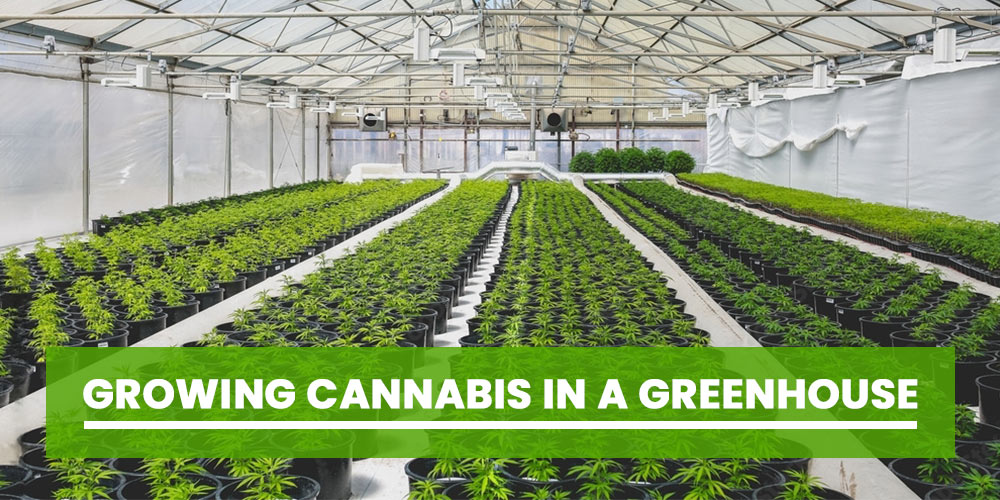Growing cannabis in a greenhouse involves the cultivation of cannabis plants in a controlled environment that mimics the natural outdoor conditions while providing additional advantages such as climate control, light manipulation, and pest management. This methodology is gaining immense popularity among cannabis growers owing to its capacity to offer a more stable and regulated environment for the plants, ultimately leading to better quality crops and higher yields. Additionally, growing cannabis in a greenhouse enables efficient use of resources like water and energy, making it a more sustainable option in contrast to traditional outdoor or indoor growing techniques.
The history of cannabis cultivation spans thousands of years, with evidence of its utilization in ancient civilizations for medicinal and recreational purposes. However, it wasn’t until the 20th century that cannabis cultivation became more industrialized, leading to the creation of hybrid strains and large-scale operations.
Today, the cannabis industry is a thriving sector, with many countries legalizing the use of cannabis for medical and/or recreational purposes. As the industry continues to grow, growing cannabis in a greenhouse is emerging as an increasingly favored method due to its effectiveness and efficiency.
Benefits of Growing Cannabis in A Greenhouse
Greenhouse cannabis growing offers several benefits, making it an attractive option for cannabis growers.
Growing cannabis in a greenhouse offers a more energy-efficient and cost-effective option in comparison to indoor growing. Unlike indoor growing which necessitates artificial lighting and ventilation systems, greenhouse cultivation capitalizes on natural sunlight and necessitates less energy to maintain the appropriate growing conditions. This results in lower utility bills and reduced operating costs for growers.
Greenhouses protect from external elements such as pests, extreme weather conditions, and theft. The controlled environment inside the greenhouse allows growers to keep pests at bay and protect their plants from harsh weather conditions while deterring theft due to the added security measures that can be implemented.
Growing cannabis in a greenhouse presents an opportunity for growers to significantly enhance their crop output and quality. By precisely regulating factors such as light, temperature, humidity, and other environmental variables, growers can engineer optimal conditions that foster exceptional plant growth and development. The outcome of this careful cultivation is a bountiful harvest of premium-quality crops, characterized by enhanced yields and elevated potency.
When it comes to cannabis cultivation, growing cannabis in a greenhouse provides a more ecologically sound and sustainable alternative to conventional outdoor growing practices. The employment of natural sunlight in the cultivation process significantly curtails the need for artificial lighting, resulting in a remarkable reduction in energy consumption and associated greenhouse gas emissions. Moreover, the controlled environment of greenhouses enables growers to maximize their use of resources, resulting in the more efficient and responsible use of water and other valuable inputs.
Different Types of Greenhouses
There are several different types of greenhouses available, each with its own advantages and disadvantages. Here’s an overview of the most common types:
1. Hoop Houses: Hoop houses are simple, low-cost greenhouses constructed using a series of metal hoops or PVC pipes covered with plastic sheeting. They are easy to assemble and can be quickly removed and moved. However, they offer limited structural support and can be vulnerable to high winds and heavy snow loads.
2. Venlo: Venlo greenhouses are popular in commercial agriculture due to their high structural strength and durability. They consist of rectangular frames with pitched roofs, typically made from aluminum or steel. They offer excellent light transmission and are designed to withstand harsh weather conditions. However, they can be expensive to construct and may require specialized expertise to install.
3. Quonset: Quonset greenhouses, similar to their hoop house counterparts, are built using an array of metallic hoops that offer superior structural reinforcement owing to their curved design. These greenhouses are typically covered with plastic sheeting or polycarbonate panels and can be effortlessly assembled. Nonetheless, they come with a height limitation and may not be ideal for cultivating taller plants.
4. Gable: Gable greenhouses are similar in structure to Venlo greenhouses but have a peaked roof that offers additional headroom and better ventilation. They are typically made from aluminum or steel and offer excellent structural support. However, they can be expensive to construct and may require specialized expertise to install.
Regarding pros and cons, here’s a quick comparison of each type:
Hoop Houses
Pros – Low cost, easy to assemble, can be moved if necessary.
Cons – Limited structural support, vulnerable to high winds and heavy snow loads.
Venlo
Pros – High structural strength, durability, excellent light transmission.
Cons – Expensive to construct, may require specialized expertise to install.
Quonset
Pros – Better structural support than hoop houses, easy to assemble.
Cons – Limited height, may not be suitable for taller plants.
Gable
Pros – Peaked roof allows for better ventilation, more headroom, and excellent structural support.
Cons – Expensive to construct, may require specialized expertise to install.
Designing and Setting Up Your Greenhouse
When designing a greenhouse for cannabis cultivation, several important factors, best practices, and tips must be considered. Here are some of the key considerations:
1 Size: The size of the greenhouse will depend on the size of your growing operation and the number of plants you plan to grow.
2. Orientation: The greenhouse should be oriented to maximize natural sunlight and minimize shading from nearby trees or buildings.
3. Ventilation: Proper ventilation is critical to maintaining optimal growing conditions. The greenhouse should allow adequate air exchange, with fans or vents to circulate fresh air and control temperature and humidity.
4. Lighting: While greenhouses take advantage of natural sunlight, additional lighting may be necessary to supplement during shorter days or cloudy periods.
5. Heating: A greenhouse heating system is necessary to maintain the desired temperature range and prevent plant damage.
6. Irrigation: An efficient and effective irrigation system ensures plants receive consistent moisture and nutrients.
Best practices for setting up a greenhouse for cannabis cultivation include:
1. Installing blackout curtains to control light cycles and promote proper flowering.
2. Ensuring proper drainage to prevent standing water and root rot.
3. Using high-quality growing medium and fertilizer to promote healthy plant growth.
4. Implementing a pest management plan to prevent and control insect and disease infestations.
5. Conduct regular plant inspections to identify issues and address them promptly.
Tips for maintaining optimal growing conditions in a greenhouse for cannabis cultivation include:
1. Monitoring temperature and humidity levels regularly to ensure they remain within the desired range.
2. Adjusting ventilation and shading as needed to maintain proper temperature and humidity levels.
3. Conduct regular water and nutrient checks to ensure plants receive adequate amounts.
4. Inspect plants regularly for signs of stress, disease, or pest infestations.
5. Maintaining a clean and sanitized growing environment to prevent the spread of disease or pests.
Key Takeaways
Growing cannabis in a greenhouse offers several benefits, including energy efficiency and cost-effectiveness, protection from external elements, a controlled environment that can increase yields and potency, and a more sustainable and eco-friendly alternative to traditional outdoor growing. The future of greenhouse cannabis cultivation looks promising as more growers turn to this method to meet the increasing demand for cannabis. Advancements in technology and growing practices are likely to further enhance the efficiency and sustainability of greenhouse cultivation.
As the cannabis industry continues to grow, it is important for growers to prioritize sustainable practices that minimize environmental impact. This includes using renewable energy sources, minimizing water usage, and implementing eco-friendly pest management strategies. If you are looking for high-quality cannabis seeds for your greenhouse cultivation operation, consider buying from Crop King Seeds. They offer a wide selection of premium seeds that are carefully selected and tested for quality, potency, and germination rates.


















